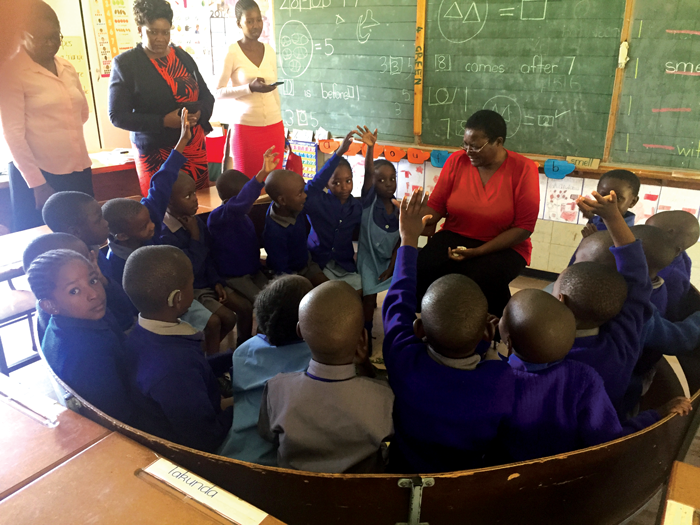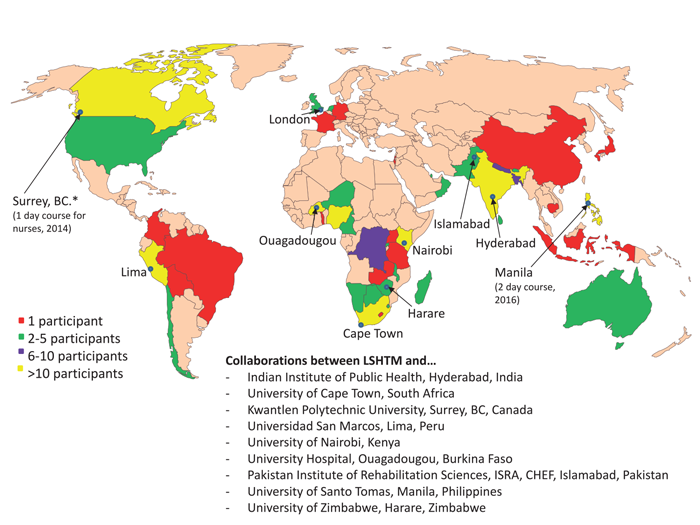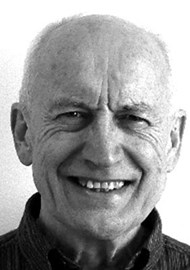In 2009 Professor Andrew Smith and Dr Daksha Patel identified the need for awareness of public health methods in hearing healthcare planning. In 2010 the first training course was held, and since then 760 health workers from 41 countries have been trained. In this article Prof Smith outlines the aims of the course and their goals for the future.
Hearing loss is a massive and neglected problem throughout the world. Eighty percent of people with hearing loss live in low and middle income (LMI) countries and in disadvantaged communities in high income countries [1]. Impaired hearing in children delays language development and slows school progress. Poor hearing health in adults causes difficulties at work, increases dementia, and leads to social isolation and stigmatisation [2].
Hearing loss leads to poverty for individuals and society, and poverty leads to hearing loss. It is a vicious cycle [3]. Public health planning for hearing impairment is the route to address the challenge of hearing loss. It will abolish many of the problems that hearing loss leads to.
My career path in hearing loss led to my appointment as medical officer at WHO giving technical advice to countries to conduct 14 population-based hearing surveys in 11 countries from 1996 to 2009. We discovered from the results of these surveys that there was a huge need to address the problem of hearing loss [4].

Figure 1. Participants who attended the PHPHI course at the South Asia Centre for Disability Inclusive Development and Research (SACDIR), Indian Institute of Public Health, Hyderabad, India in 2016.
My colleague, Dr Daksha Patel, and I created a five-day training course in 2010 at the International Centre for Evidence in Disability, at the London School of Hygiene and Tropical Medicine [5]. The course is called Public Health Planning for Hearing Impairment (PHPHI). We developed the course to train health professionals and health planners to use public health methods to address the challenge of hearing loss in their country (Figure 1). There is a huge shortage of professionals working in the field of hearing health in LMI countries [6]. Most hearing health professionals around the world need to be taught to use public health methods.
The aim of the courses is to expand capacity building for public health knowledge and skills in ear and hearing health (EHH). The key learning objectives of the course are:
- Relate the principles and practice of public health and the application of prevention strategies against hearing impairment.
- Review the epidemiology and evidence for ear disease and hearing loss globally, with a focus on low and middle income countries, and disadvantaged groups in high-income countries.
- Examine population-based research methods (qualitative and quantitative) used in ear and hearing care.
- Appraise the role of primary ear and hearing care and its training, for prevention and early detection of hearing loss.
- Understand the principles of planning, and develop a plan for ear and hearing health priorities appropriate for a local health system.
We use innovative and interactive teaching methods including group exercises and projects. A detailed course manual and work-book is provided, and all course material, presentations and relevant papers are provided on a memory stick for each participant.

Figure 2. PHPHI course participants observe children being taught at an integrated
school for deaf and normal hearing children in Harare, Zimbabwe.
Every course is adapted and tailored to local circumstances and the local participants. Faculty from the local university partner are invited to teach on the course. Key contributors also come from relevant organisations such as WHO and CBM, either in person or by Skype link. Figure 2 shows course participants on a field trip to a school for deaf children in Zimbabwe. There is an online discussion group for all alumni to keep in touch after the course, and share experiences and knowledge.
A detailed end-of-course questionnaire is completed anonymously by each participant to assess their course experience and suggest improvements. Key outputs from the courses include:
- Training local faculty in public health approaches
- Raising awareness and advocacy for hearing loss at a local level
- Local assessment of need and gaps within district health programmes
- Initiating the development of national and local programmes, and specific screening programmes such as for neonates and school health.
The courses have attracted academics and professionals in otology and audiology and allied fields. Health planners from Ministries of Health and Education, and non-governmental organisations have also participated on the courses.

Figure 3. PHPHI course locations and participants’ countries (total of 41 countries).
The courses have been conducted with colleagues at host universities in ten centres in Ouagadougou, Burkina Faso; Surrey, BC, Canada; Hyderabad, India; Nairobi, Kenya; Islamabad, Pakistan; Lima, Peru; Manila, Philippines; Cape Town, South Africa; London, UK; and Harare, Zimbabwe. We have trained over 760 participants from 41 countries in 25 courses (Figure 3). The courses have been supported by CBM and private donations.
We also ran a half-day workshop overview of PHPHI at Gallaudet University, Washington, DC in the USA in October 2015 and a two-day workshop at the University of Santo Tomas, Manila in the Philippines in October 2016. The workshops were held in conjunction with the Conference of the Coalition on Global Hearing Health. The pre-conference workshops raised awareness about PHPHI and the full five-day course will now be held at the same university in Manila in November 2017.
We are in discussion and planning to extend the PHPHI course programme to Universities in Australia, Bolivia, Canada, Indonesia and Vietnam in 2018. We are going to focus on indigenous people in Canada because of their high rates of hearing loss and ear health problems. The high rates are due to middle ear infection, living circumstances and poor access to health care due to living in remote areas. They also suffer from noise damage to hearing, often from unprotected rifle fire and prolonged snowmobile use during the hunting season [7]. We are planning to run the course in collaboration with the University of British Columbia (UBC), Canada, in May 2018.
We are in the process of conducting an online survey of all previous participants to assess the value and impact of the course. Our overall goal is to create a global network of health professionals trained in public hearing health to address the challenge of hearing loss.
SUMMARY
-
Hearing loss is a massive and neglected problem throughout the world.
-
80% of people with hearing loss live in low and middle income countries and in disadvantaged communities in high income countries.
-
Public health planning for hearing impairment (PHPHI) is the route to address the challenge of hearing loss.
-
The overall goal of the courses on PHPHI is to create a global network of health professionals trained in public hearing health to address the challenge of hearing loss.
References
1. Mackenzie I, Smith A. Deafness—the neglected and hidden disability. Ann Trop Med Parasitol 2009;103:565-71.
2. Wilson B, Tucci D, Merson M, O’Donoghue G. Global hearing health care: new findings and perspectives. Lancet [Epub ahead of print] doi.org/10.1016/S0140-6736(17)31073-5
3. Kubba H, MacAndie C, Ritchie K, MacFarlane M. Is deafness a disease of poverty? The association between socio-economic deprivation and congenital hearing impairment. International Journal of Audiology 2004;43(3):123-5.
4. Pascolini D, Smith A. Hearing impairment in 2008: a compilation of available epidemiological studies. International Journal of Audiology 2009;48:1-13.
5. ICED Hearing Group, London School of Hygiene and Tropical Medicine.
http://disabilitycentre.lshtm.ac.uk/
key-publications/hearing-group/
Last accessed 23 September 2017.
6. WHO. Multi-country assessment of national capacity to provide hearing care. Geneva, Switzerland; World Health Organization; 2013:
http://www.who.int/pbd/publications/
WHOReportHearingCare_Englishweb.pdf
Last accessed 24 September 2017.
7. MacQueen K. Deafness and diminished hearing are rampant in the North. Maclean’s 2012; http://www.macleans.ca/society/health/hard-of-hearing/
Last accessed 24 September 2017.





